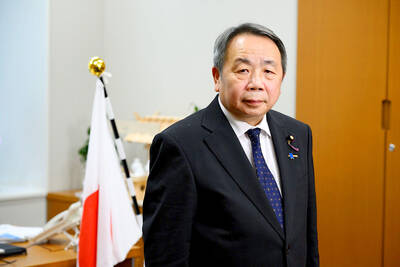The manufacturing, importation and sale of food packaged with polyvinylchloride (PVC) is to be banned in Taiwan starting in July next year, the Environmental Protection Administration (EPA) announced on Friday.
Although the use of PVC has been declining, some dairy products are still sold in PVC containers, EPA Recycling Fund Management Board executive director Wang Yueh-bin (王嶽斌) said.
PVC packaging can release plasticizers when used to store liquids, and the substance can lead to cancer when consumed over time, Wang said.
The material sometimes contains stabilizers that can also harm people’s health, he added.
When burned, PVC containers can release dioxins and heavy metals. Incinerators use filters to catch these materials, although contaminated ashes can leach into the ground and pollute the environment, Wang said.
Bans on PVC packaging have been implemented in many countries, he said, citing South Korea and New Zealand as examples. Canada, Spain and some US cities have also introduced PVC packaging bans.
With this measure, Taiwan can expect to eliminate about 79 tonnes of PVC food packaging every year, Wang said.
The ban is to be enforced under Article 21 of the Waste Disposal Act (廢棄物處理法), which says that the government can prohibit or restrict the manufacturing, import or sale of items that are found to harm the environment, the EPA said.
When the ban takes effect, people who sell foods with PVC packaging could face fines ranging from NT$1,200 to NT $6,000, while those manufacturing or importing such items could be subject to a fine ranging from NT$60,000 to NT$300,000.

A strong continental cold air mass is to bring pollutants to Taiwan from tomorrow, the Ministry of Environment said today, as it issued an “orange” air quality alert for most of the country. All of Taiwan except for Hualien and Taitung counties is to be under an “orange” air quality alert tomorrow, indicating air quality that is unhealthy for sensitive groups. In China, areas from Shandong to Shanghai have been enveloped in haze since Saturday, the ministry said in a news release. Yesterday, hourly concentrations of PM2.5 in these areas ranged from 65 to 160 micrograms per cubic meter (mg/m³), and pollutants were

Taiwan’s armed forces have established response protocols for a wide range of sudden contingencies, including the “Wan Chun Plan” to protect the head of state, the Ministry of Defense (MND) said today. After US President Donald Trump on Saturday launched a series of airstrikes in Venezuela and kidnapped Venezuelan President Nicolas Maduro, concerns have been raised as to whether China would launch a similar “decapitation strike” on Taiwan. The armed forces regularly coordinate with relevant agencies and practice drills to ensure preparedness for a wide range of scenarios, Vice Minister of National Defense Hsu Szu-chien (徐斯儉) told reporters before a

EVA Airways on Saturday said that it had suspended a pilot and opened an investigation after he allegedly lost his temper and punched the first officer several times as their plane was taxiing before takeoff at Los Angeles International Airport. According to a report published on Thursday by The Reporter, the incident occurred after the flight’s Malaysian first officer tried to warn the Taiwanese pilot, surnamed Wen (文), that he was taxiing faster than the speed limit of 30 knots (55.6kph). After alerting the pilot several times without response, the first officer manually applied the brakes in accordance with standard operating

Japanese Councilor Hei Seki (石平) on Wednesday said that he plans to visit Taiwan, saying that would “prove that Taiwan is an independent country and does not belong to China.” Seki, a member of the Japan Innovation Party, was born in Chengdu in China’s Sichuan Province and became a naturalized Japanese in 2007. He was elected to the House of Concilors last year. His views on the Chinese Communist Party (CCP) — espoused in a series of books on politics and history — prompted Beijing to sanction him, including barring Seki from traveling to China. Seki wrote on X that he intends